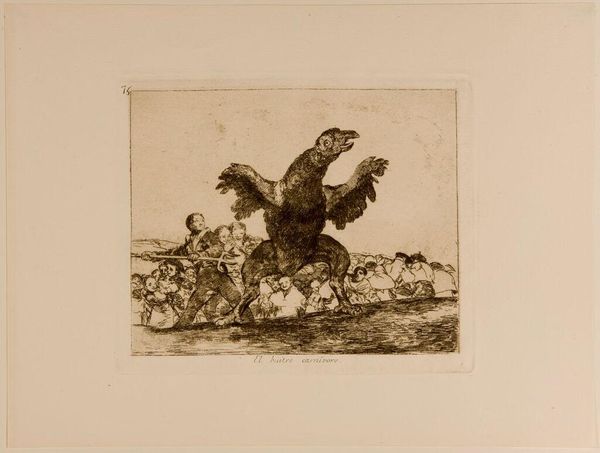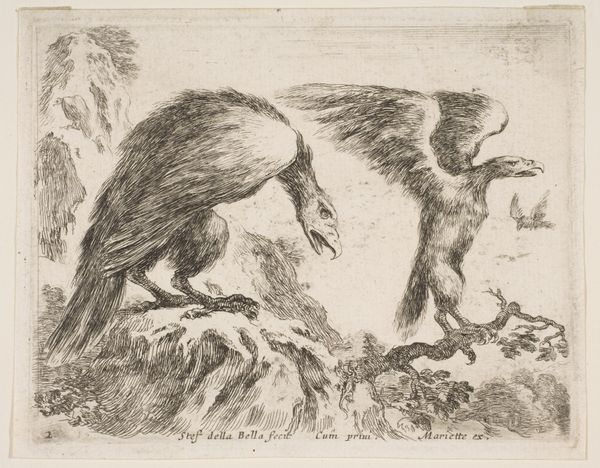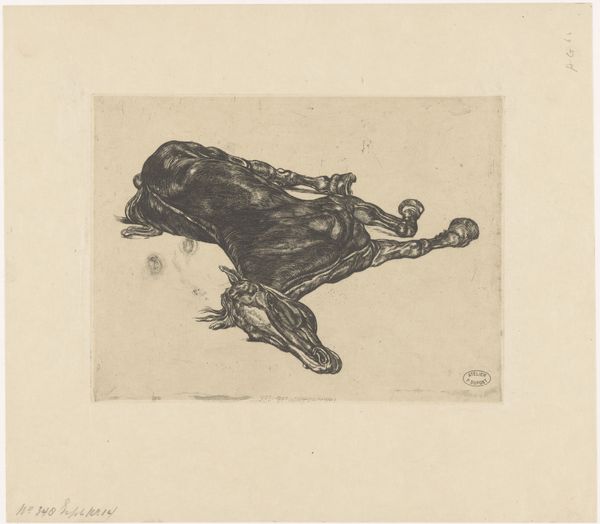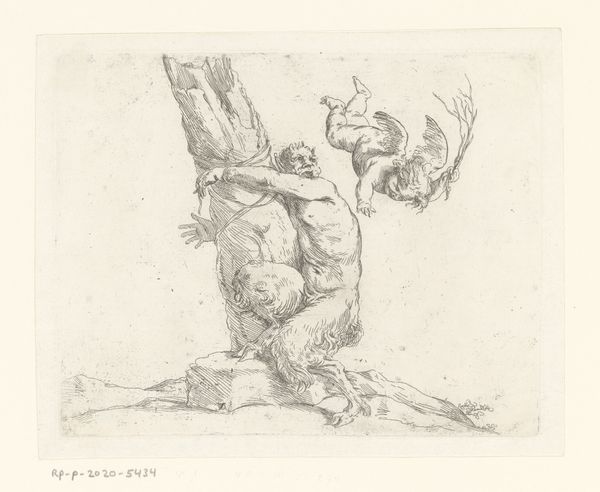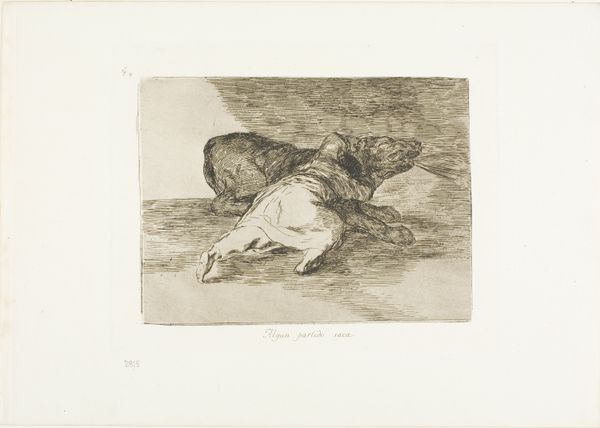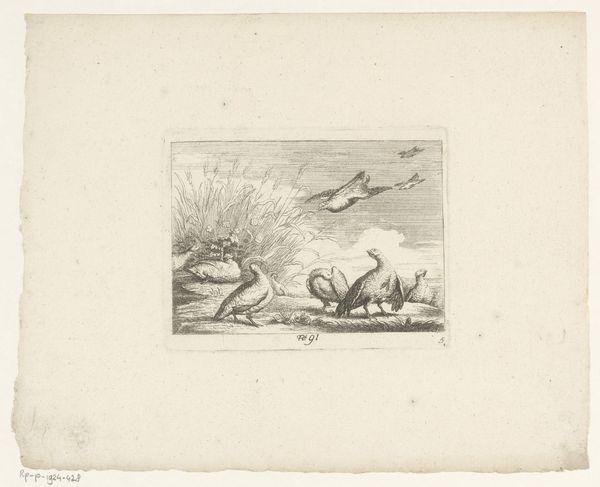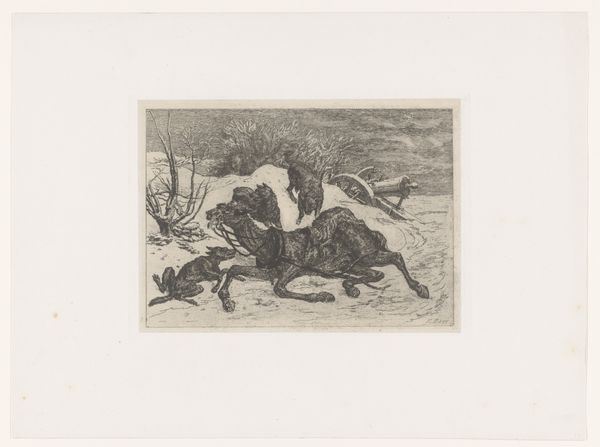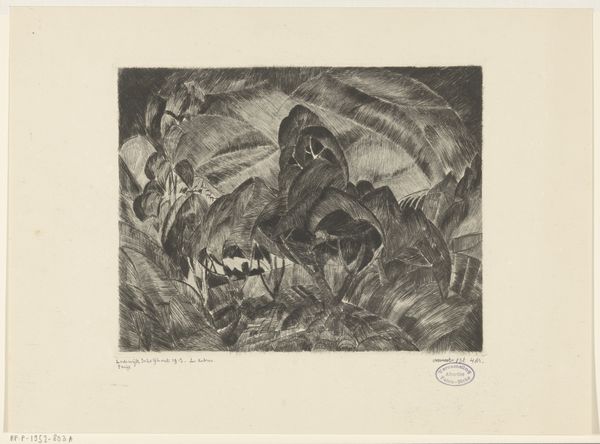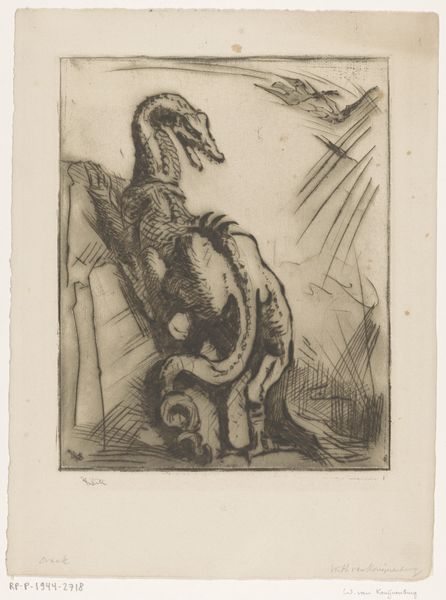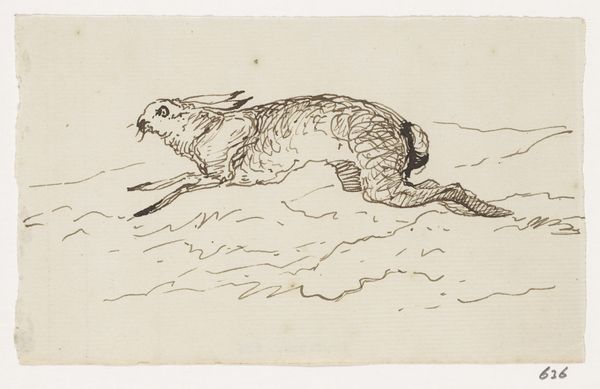
The Carnivorous Vulture, plate 76 from The Disasters of War Possibly 1815 - 1863
0:00
0:00
drawing, print, etching, paper
#
drawing
#
narrative-art
# print
#
etching
#
war
#
figuration
#
paper
#
romanticism
#
history-painting
Dimensions: 155 × 200 mm (image); 175 × 215 mm (plate); 240 × 337 mm (sheet)
Copyright: Public Domain
Curator: This is "The Carnivorous Vulture," plate 76 from Francisco de Goya's series "The Disasters of War." Goya likely created this etching and aquatint print on paper sometime between 1815 and 1863. Editor: My immediate impression? Oppressive. That massive, grotesque bird dominating the frame... it's nightmare fuel. Curator: It’s a stark image, definitely. The series documents the Peninsular War, and it's generally understood as Goya's indictment of human cruelty during conflict. We should consider that, during his lifetime, Spain was facing absolutism rule by Ferdinand VII. Editor: Indictment is putting it mildly. Look at the bird's almost theatrical pose! Its beak is slightly open. It's practically gloating, like a twisted master of ceremonies over some horrific spectacle. Who is the bird meant to be? Curator: Some scholars interpret the vulture as personifying those who profit from war. The figures in the background look like survivors, perhaps onlookers powerless to intervene. Some of those spectators even appear to be smiling. This evokes questions about complicity and power dynamics inherent to these socio-political realities. Editor: The passivity of the crowd behind it is chilling! They don't resist! It’s like watching a slow-motion apocalypse unfold, and the guy with the rope to the side, almost leading the vulture... That guy seems to enable this all. I think that vultures are meant to eat things that are dead, this looks like more of a "Vulture Renaissance"! Curator: I see what you mean; the figure does seem to usher the animal toward the scene's action, suggesting it's almost encouraged or enabled through existing societal hierarchies and imbalances of power. Even the aquatint's tonality and grainy shadows amplify a grim view of institutional structures, shaping public discourse in the Romantic Era. Editor: Makes you wonder what "disaster" Goya thought was worse. Death itself, or the carrion birds circling overhead as soon as it becomes profitable. It is difficult for me to separate those who profit from war to its original motivation. It has become normalized behavior through these structures that promote such practices! Curator: Precisely, and that’s a key point in appreciating Goya’s view. War extends past battles; its insidious corruption spreads throughout societies and institutions long after ceasefires. The print's true significance emerges as an unflinching analysis of not only violence, but our cultures and institutions responsible to contain violent episodes that inevitably become vulnerable themselves. Editor: Seeing that level of corruption immortalized... it’s more terrifying than any battlefield. Now there's a "disaster of war," indeed. These conversations will get you thinking.
Comments
No comments
Be the first to comment and join the conversation on the ultimate creative platform.
